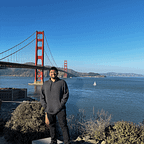Living with ambiguity
I’ve been working on my capstone thesis for the last 4 months and I’ve had to make quite a few decisions to keep the ball rolling forward. From choosing a project topic, to deciding and realising constraints, exploring and eliminating ideas, there has been constant progress. Or so it would seem.
While a calm and collected facade is presented to the rest of the world, the inside of my mind has been more like the meme where the dog is sitting in the burning house. Even after eight years in design, I cannot help but feel like I barely know anything. Every decision I make seems arbitrary. Each area explored seems like its been done to the fullest and I am at a dead-end again, not knowing if I should simply turn back, or plough right through the wall.
This got me thinking about living with ambiguity and how much of a designer’s work is rooted in the unknown. Unknown questions, unknown explorations, unknown expectations, unknown results. It’s quite easy to freeze, isn’t it?
The polar opposite of this situation is one where we have too much information, which can, at times, be contradictory. Knowing how to navigate through all this clutter can be just as overwhelming as not knowing where to go.
Design is all about trying to find an optimal balance between not knowing enough and knowing too much. The unknown is where we find the freedom to experiment, the room to innovate and the space to question the status quo. The known allows for these creative thoughts to stand on solid foundations.
Each phase of design, and its associated methods are a tool that helps us navigate through this thick fog of ambiguity. When we have no information, we use interviews, inquiries, and readings to gather the information. When we know too much, we analyse, create affinities and themes to condense the thoughts. When we are unsure of where we are, we prototype and evaluate to determine how much more we need to know, or whether what we know holds merit.
But at the end of the day, this self-determination is what keeps the ball rolling. Having the awareness to discern if we need to know more, or digest what we have is a key competency of a designer. Resilience in the face of this extreme discomfort is a designer’s ally, enabling well thought out decisions to come through instead of rushing to premature and poor conclusions.
As I reflect on my journey through the capstone, coming to terms with the ambiguity and trusting myself with decisions is the catalyst to new ideas, not the barrier many might expect.
And so, to my fellow designers, I say: Embrace the ambiguity. Let it challenge you, let it push you, let it inspire you. For it is in the spaces between the known and the unknown that the true art of design unfolds.
